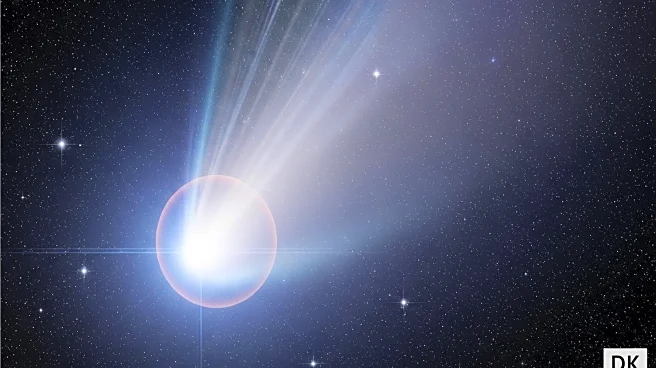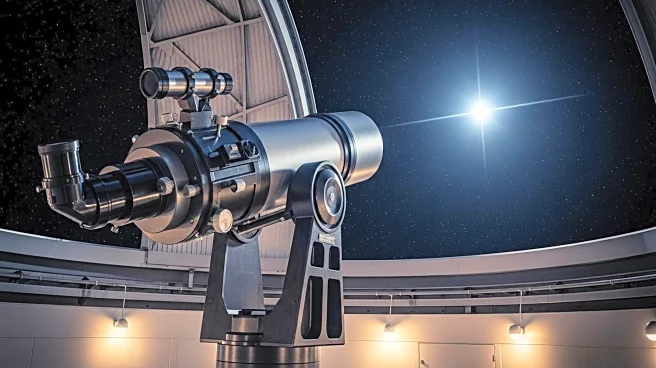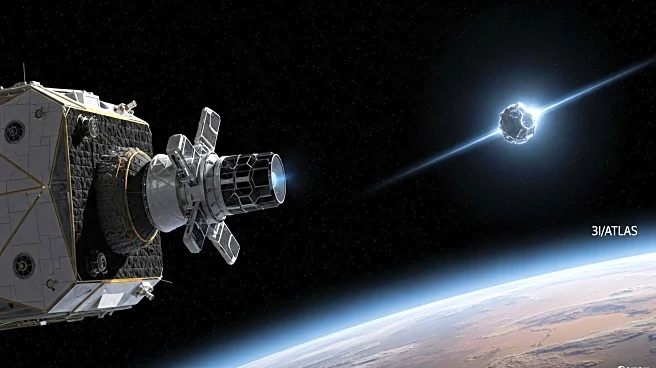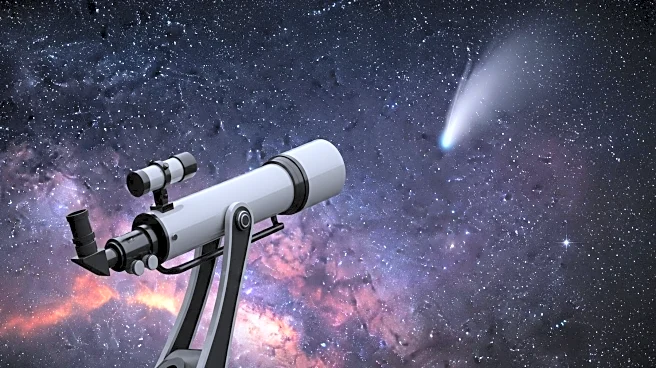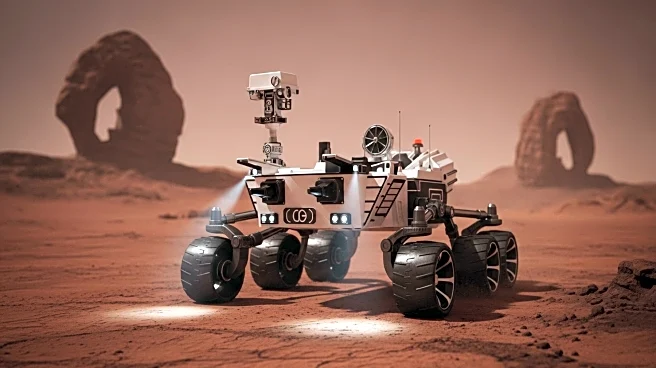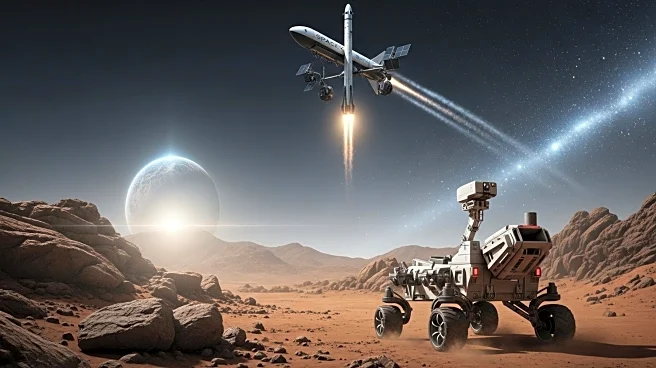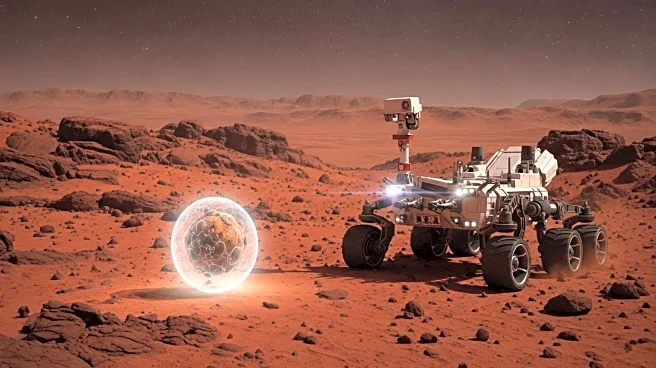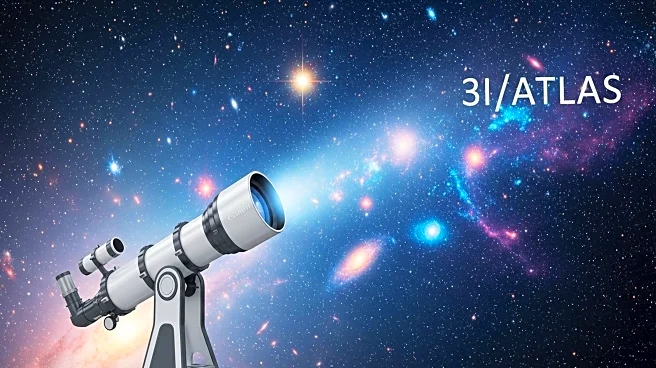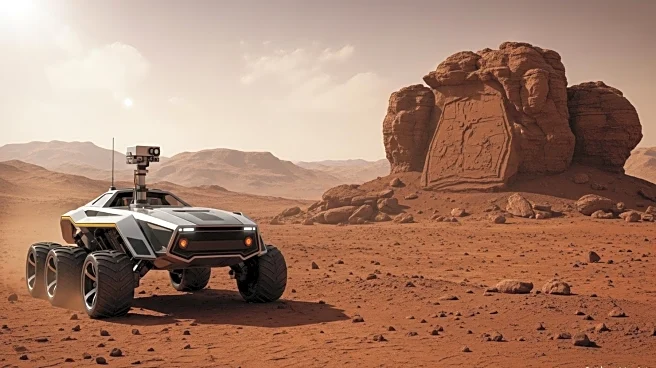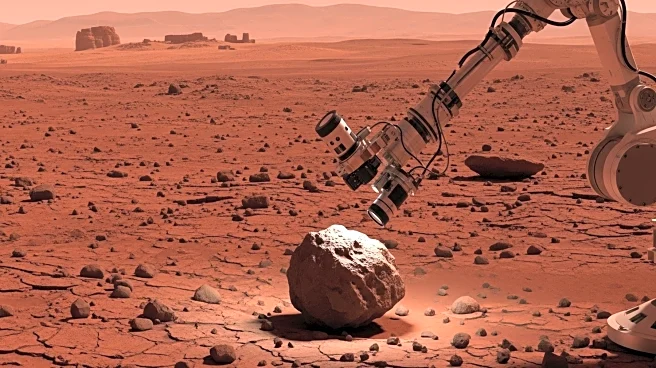What's Happening?
Recent observations from the Zwicky Transient Facility (ZTF) indicate that the interstellar object 3I/ATLAS may have a nucleus larger than initially thought. Data shows a steady brightening of 3I/ATLAS, attributed to mass loss, which was observed as a glow of scattered light in a Hubble Space Telescope image. The ZTF data suggests a 'plateau' in the object's effective size, leading researchers to propose a model-dependent estimate of the nucleus diameter at 5.6 kilometers. However, the actual size may be closer to 15 kilometers, significantly larger than previous interstellar objects like 2I/Borisov.
Why It's Important?
The potential size of 3I/ATLAS's nucleus could have implications for understanding the composition and behavior of interstellar objects. A larger nucleus suggests a greater mass, which could influence the object's trajectory and interaction with solar radiation. This discovery may challenge existing models of interstellar object formation and distribution, prompting further investigation into the origins and characteristics of such objects. Understanding these factors is crucial for predicting the behavior of interstellar objects as they pass through the solar system.
What's Next?
On October 3, 2025, 3I/ATLAS will pass close to Mars, allowing NASA's HiRISE camera to capture high-resolution images that could provide more accurate measurements of the nucleus size. This data will help refine models of interstellar object composition and behavior. Researchers will continue to analyze the ZTF data to confirm the size estimates and explore the implications for interstellar object dynamics.
Beyond the Headlines
The study of 3I/ATLAS offers insights into the distribution and characteristics of interstellar objects, which may have implications for understanding the broader cosmic environment. The findings could inform future missions aimed at studying interstellar objects and their impact on the solar system. Additionally, the research highlights the importance of advanced observational techniques in uncovering the mysteries of space.
